The 2015 U.S.A. Landscape Photographer of the Year Contest: Winners and Finalists
This year's photographs showcase the beauty of nature
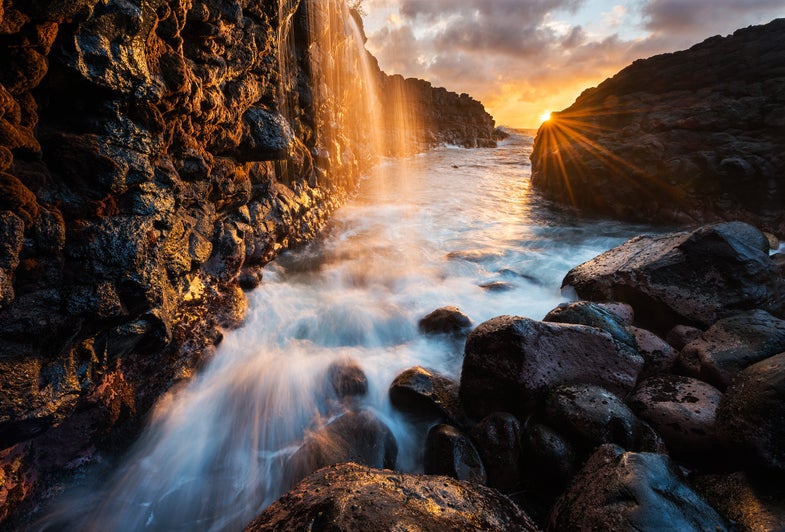

Black & White
Winner: Roger Arnall, retired consulting engineer, Melbourne, Australia
Where he was standing: Fifth Avenue at West 56th Street, New York City
What inspired the shot: Arnall was walking around Manhattan when he noticed the reflective, box-like architecture of Trump Tower. Recognizing the potential for a b&w, he positioned himself to capture the perfect angle.
Essential gear: Because Arnall hadn’t planned this shot, he carried with him only one 24–70mm lens. This limited his maximum focal length, so he set the lens to 70mm and planned to crop and straighten verticals later.
How he processed it: Arnall converted to black-and-white using Photoshop CS5. He applied several curves layers, each masked to enable zone-specific tonal adjustments or dodging and burning. “I use postprocessing as my paintbrush,” he says.
Try it yourself: To avoid some of the barriers Arnall faced, he suggests that you carry the widest range of gear possible. For a photo like this, a tripod and a lens with a longer focal length would have been welcome.
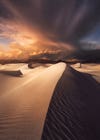
Overall Winner: Adult
WINNER: Ted Gore, motion graphic designer, Los Angeles, California
Where he was standing: Mesquite Sand Dunes, Death Valley National Park, California
What inspired the shot: Awed by photographs of sand dunes that he’d seen, Ted Gore hoped to shoot them himself. He found exactly what he wanted on a trip to Death Valley.
Essential gear: Gore let the beauty of the dune shine and says only essential gear was his camera and lens. Since the scene did not call for slow shutter speeds, even a tripod was unnecessary.
How he processed it: This image is a combination of three: one shot of the sky, and two of the foreground (stacked to get front-to-back sharpness). He processed all three first in Lightroom CC to adjust contrast, sharpness, and color, then in Photoshop CC to composite and make further local adjustments.
Try it yourself: If you get inspired by this photo of the dunes as Gore did, protect yourself and your gear before you set out. Cover up bare skin and your camera—when the wind picks up the sand can damage both. Also, keep the heat in mind and plan ahead. Summer in Death Valley is scorching, but winter is the perfect temperature for exploration.

Overall Winner: Youth
Winner: Timothy Scott Aiken, 20, student at Stanford University, Palo Alto, California
Where he was standing: Diamond Lake, Trinity Alps, California
What inspired the shot: While backpacking with his sister, Aiken wanted to capture the beauty that he woke up to everyday. Seeing his tent atop a rocky knoll gave him an idea, and when his sister entered the frame he knew he had found his shot.
Essential gear: Aiken’s 70–200mm telephoto zoom isolated the tent against the massive mountains towering in the background.
How he processed it: After shooting, Aiken did his initial processing in Lightroom 5 with adjustments to curves, levels, and saturation. Next, he used Photoshop CC to sharpen, enhance detail, and dodge and burn. Finally, he added a high-pass filter to keep the image’s texture and bring out the details.
Try it yourself: To capture the beauty of nature as seen here, Aiken’s one and only suggestion is to get out and explore. Some of the best spots are the most seldom visited; this young photographer drove 6 hours and climbed 5,000 vertical feet to find this natural treasure.

Classic View
Winner: Paul Leatherbury, geographic information systems specialist, Page, Arizona
Where he was standing: Off I-84 near Hermiston, Oregon
What inspired the shot: En route to Portland, Oregon, Paul Leatherbury stopped outside the town of Herminston to photograph. Leatherbury says he “was drawn to the wavy nature of the tree trunks.” His angle of view let the trees fill the frame and a short telephoto setting of 85mm accentuated depth.
Essential gear: Because the forest was still, he had the luxury of a simple setup and time for framing. “I would say what is essential is the photographer’s awareness and patience,” Leatherbury says, “and, of course, a tripod.”
How he processed it: Leatherbury processed his RAW image in Lightroom 4. He made adjustments to contrast and saturation, and reduced the blacks of the image slightly to preserve the soft light that he had witnessed at the scene.
Try it yourself: Leatherbury believes perseverance surpasses technical skill in importance when shooting. “I’ve always sought out the unique light and mood that weather provides,” he says.

My U.S.A.
Winner: Grant Ordelheide, photographer, Denver, Colorado
Where he was standing: South rim of the Grand Canyon between Yavapai Point and Mather Point
What inspired the shot: With a storm approaching, Ordelheide got into position and set up his gear. Since he couldn’t predict where it would hit, he did his best to frame the composition and left the rest to Mother Nature.
Essential gear: Ordelheide’s shot could not have been made without his Gitzo GT3532LS tripod, a Really Right Stuff BH-55 ballhead, and a Lightning Trigger. That gear made it possible to capture a split-second image.
How he processed it: He converted his RAW file in Lightroom 5, brightening midtones, removing chromatic aberration, and correcting color. In Photoshop CS5, he lightened using curves and added sharpness.
Try it yourself: Learn about lightning safety before you shoot and practice reading weather satellite reports to predict where a storm is moving.
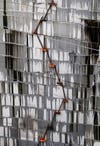
Urban Landscape
Winner: Don Jacobson, retired glassblower, Portland, Oregon
Where he was standing: Rock of Ages Granite Quarry, near Barre, Vermont
What inspired the shot: Don Jacobson almost didn’t get this picture after initially resisting recommendations to photograph at the quarry. When he finally went, he was shocked by the graphic beauty. The rain produced varying shades of grey across the granite, adding interest to the shot.
Essential gear: When Jacobson realized he needed to shoot over a fence, a tripod was out of the question. But his image-stabilized, wide-to-telephoto zoom saved the day. It allowed him to adjust the focal length to appropriately frame his shot.
How he processed it: In Photoshop CS5, Jacobson added one curves layer to increase contrast and another (partially obscured by a gradient mask) to darken the top portion of the image and even out the light of the picture overall.
Try it yourself: Looking to shoot a geometrical photo like Jacobson’s? You need to find the appropriate landscape and go prepared. He recommends bringing as many lenses as you can carry and being open to less-than-perfect weather conditions.

Landscape On the Move
Winner: Ted Gore, motion graphic designer, Los Angeles, California
Where he was standing: Kalapana lava fields, Big Island, Hawaii
What inspired the shot: During a trip to Hawaii, Ted Gore was moved by the sight of flowing lava. The area is dangerous and can only be accessed with a guide, but Gore was able to get close enough for a great angle from which to shoot many frames.
Essential gear: Gore could not have captured this without a long lens. He shot with a Tamron SP 70–200mm f/2.8 Di lens (racked out to 200mm) to avoid getting too close. Shooting at night made this fast lens with its big maximum aperture even more pivotal.
How he processed it: After capturing many exposures of both the lava field and sky, Gore used Adobe Photoshop Lightroom CC for initial color, temperature, and exposure adjustments. He then used Adobe Photoshop CC to combine multiple frames of the land to maximize the depth of field. Finally, he blended the exposures he’d shot of the sky with the images of the lava by brushing on layer masks.
Try it yourself: To capture an image like his, Gore suggests finding a reputable guide to help you and packing a sturdy tripod and a telephoto lens. Use a remote trigger to limit camera shake for long exposures.

High Voltage

Rush

Path Through the Redwoods

Wanderland

Milky Way Over Desolate Wilderness

The Desolate Path

Wild Superstitions
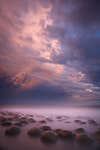
Bowling Ball Beach
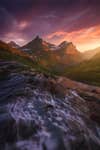
Into the Valley


North Moulton Barn, Grand Tetons
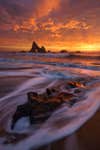
Sorcery
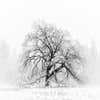
Pencil to Paper
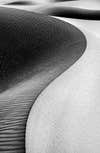
Death Valley

Urban Textures

Mountain Mist

Revelations

The Reminiscence of Trees
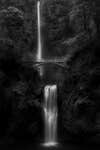
Ethereal

Mirage of Dunes

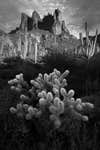
Three Sisters

Bend in the Universe

Morning in Philadelphia

Afternoon Hourse

Making It

Family Get Together



New York City



Ice Cave, Alaska

Desert Dream

Photographing Mt. Hood

Mossy Bits

Dagobah

Winter Vessel

Hypnotic Waterfall

Delicate Dogwood

Camping Sunset

Pumpkin Spice

Appalachia from Mountain to Moonscape

Columbus Circle
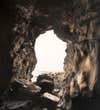
The Fisherman’s Cave

Bridal Veil Morning Light

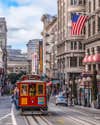
Americana

Twisted Bristlecone Pine

Snow
Want to see some of the most arresting images recently made in America? Check out the winners of the 2015 U.S.A. Landscape Photographer of the Year competition. To learn what it took to capture them, we talked to the top shooters in each category. These are their secrets.